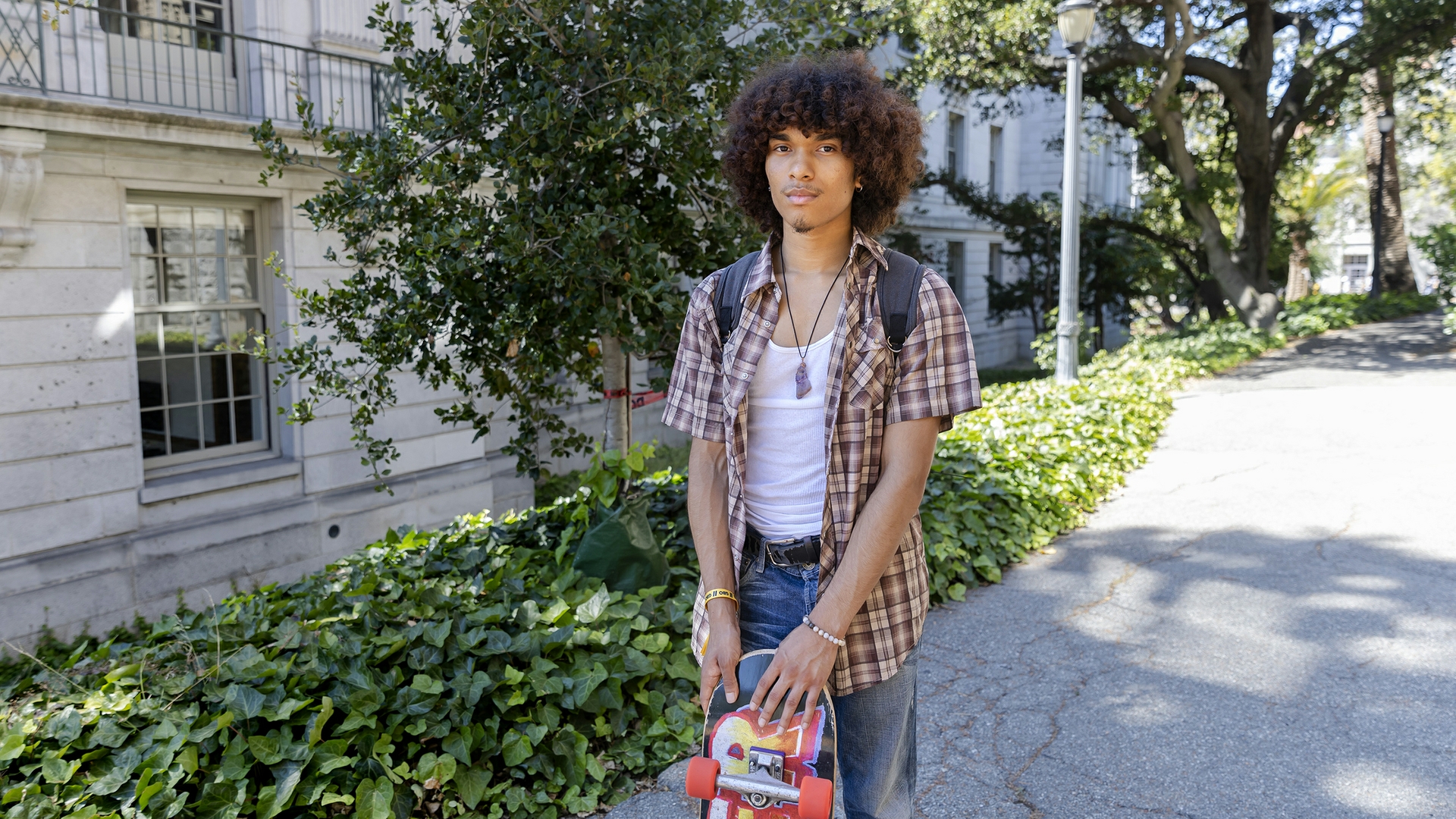‘It’s time to grow up’: Advice one math student didn’t take
His mom threw his Legos out when he was a teenager. But the love new transfer student Micheal Mendizabal had for building things never left.

Brittany Hosea-Small for UC Berkeley
August 31, 2023
This Q&A is part of a series of new student profiles for our 2023 back-to-school coverage. Have someone you think we should write about? Contact [email protected].
Berkeley News: Where are you from?
Micheal Mendizabal: Los Angeles, California. I transferred from Santa Monica College. I’m a Sharer Scholar.
Why did you decide to come to Berkeley?
I heard it rains a lot here. But I said that to somebody earlier today, and they were like, No, it doesn’t rain that much. I was choosing between here and UCLA, and since I thought it was cooler here, I was, like, Yeah, I prefer Berkeley.
What are you interested in studying here?
Applied mathematics.
How come?
Math is fun. But really, it feels like the closest I can get to affecting technology. And applied math is really general. Some people are the big cogs, like engineers, but I’m more so the little guy who makes it function. I prefer a role like that, rather than having the hefty toll of doing everything. I like being a support system.
What kind of applied math projects interest you?
Anything with a movement. I think that’s something I would really enjoy because it’s more applied, something I actually have to move my arms more in order to build. So anything with building. My forte, when I was younger, was always creating things with Legos and stuff. So this is just like a higher step up.
Did you play with Legos a lot as a kid?
Oh, yeah, man. I was obsessed. I used to make giant robots. I used to have my own storylines. I would go back if I still had them, I’m not gonna lie.
You don’t have them anymore?
My mom threw them away. She was like, It’s time to grow up.
What did you like about building with Legos? Did you follow the instructions or create your own things?
I would create my own things. I hate following instructions. The other day I had to build a motor scooter. The instructions were right there, and I was like, Oh, I can’t read this. I just tried using my intuition. So I really like the process of making things from scratch and just tinkering with them until they get there. I just want to get more involved with that process, instead of having projects come to me. I want to seek out those types of experiences.
Do you feel like the imagination that you use to create things out of Legos is a similar way of thinking when doing math?
I think it’s really similar because with Legos you would think everything you’re doing is just intuition, but it really requires critical thinking because you think of patterns, a process to get things done in a way that you’re imagining. And even being able to uphold that type of mindset when facing adversity. Being in that position where your creativity carries you, I think that’s one of the most important things you can have.
And I want to get to that point again because I feel like I’m not there anymore, like I used to be. Although I am working to become a mathematician, I also want to do things in my own way where I can look back and say, I’m proud that I did this.
Are there any clubs or classes you’re especially interested in?
Berkeley has these classes called DeCals, which are student-run classes. Not all of them are hardcore educational. Most of them are made from love that students have for something, like the one I’m taking for math. It’s to teach you how to do proofs and getting you to a critical thinking mindset. And that’s something that I really need. They also have fun ones, like how to solve a Rubik’s Cube.